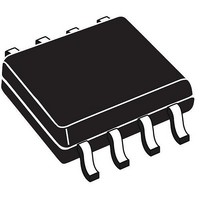TEA1532AT/N1/DG,11 NXP Semiconductors, TEA1532AT/N1/DG,11 Datasheet - Page 22

TEA1532AT/N1/DG,11
Manufacturer Part Number
TEA1532AT/N1/DG,11
Description
IC CTRLR SMPS GREEN OVP 8SO
Manufacturer
NXP Semiconductors
Datasheet
1.TEA1532TN1118.pdf
(27 pages)
Specifications of TEA1532AT/N1/DG,11
Output Voltage
12 V
Output Current
170 mA
Output Power
0.5 W
Input Voltage
70 VAC to 276 VAC
Switching Frequency
63 KHz
Operating Temperature Range
- 20 C to + 145 C
Mounting Style
SMD/SMT
Package / Case
SO-8
Duty Cycle (max)
70 %
Lead Free Status / RoHS Status
Lead free / RoHS Compliant
Philips Semiconductors
14. Soldering
9397 750 14319
Product data sheet
14.2.1 Soldering by dipping or by solder wave
14.2.2 Manual soldering
14.3.1 Reflow soldering
14.1 Introduction
14.2 Through-hole mount packages
14.3 Surface mount packages
This text gives a very brief insight to a complex technology. A more in-depth account of
soldering ICs can be found in our Data Handbook IC26; Integrated Circuit Packages
(document order number 9398 652 90011).
There is no soldering method that is ideal for all IC packages. Wave soldering is often
preferred when through-hole and surface mount components are mixed on one
printed-circuit board. Wave soldering can still be used for certain surface mount ICs, but it
is not suitable for fine pitch SMDs. In these situations reflow soldering is recommended.
Driven by legislation and environmental forces the worldwide use of lead-free solder
pastes is increasing.
Typical dwell time of the leads in the wave ranges from 3 seconds to 4 seconds at 250 C
or 265 C, depending on solder material applied, SnPb or Pb-free respectively.
The total contact time of successive solder waves must not exceed 5 seconds.
The device may be mounted up to the seating plane, but the temperature of the plastic
body must not exceed the specified maximum storage temperature (T
printed-circuit board has been pre-heated, forced cooling may be necessary immediately
after soldering to keep the temperature within the permissible limit.
Apply the soldering iron (24 V or less) to the lead(s) of the package, either below the
seating plane or not more than 2 mm above it. If the temperature of the soldering iron bit is
less than 300 C it may remain in contact for up to 10 seconds. If the bit temperature is
between 300 C and 400 C, contact may be up to 5 seconds.
Reflow soldering requires solder paste (a suspension of fine solder particles, flux and
binding agent) to be applied to the printed-circuit board by screen printing, stencilling or
pressure-syringe dispensing before package placement.
Several methods exist for reflowing; for example, convection or convection/infrared
heating in a conveyor type oven. Throughput times (preheating, soldering and cooling)
vary between 100 seconds and 200 seconds depending on heating method.
Typical reflow peak temperatures range from 215 C to 270 C depending on solder paste
material. The top-surface temperature of the packages should preferably be kept:
•
below 225 C (SnPb process) or below 245 C (Pb-free process)
– for all BGA, HTSSON..T and SSOP..T packages
Rev. 02 — 4 February 2005
TEA1532(A)P; TEA1532(A)T
GreenChip II SMPS control IC
© Koninklijke Philips Electronics N.V. 2005. All rights reserved.
stg(max)
). If the
22 of 27












